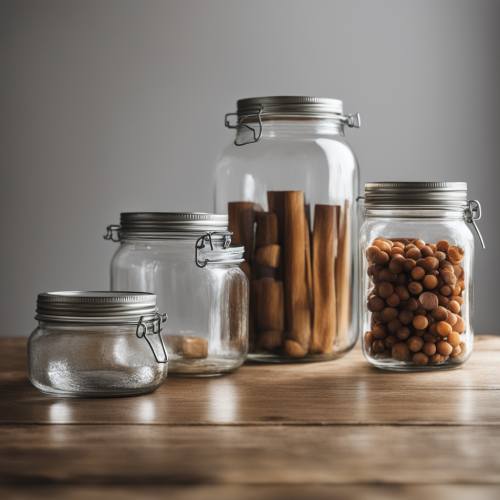Preserving the Past, Securing the Future: The Importance of Food Storage Techniques
In the hustle and bustle of modern life, it’s easy to take for granted the abundance of food that graces our tables. Yet, throughout history, civilizations have faced the challenge of ensuring an adequate food supply, especially in times of scarcity or uncertainty. The importance of food storage techniques cannot be overstated, as they play a vital role in preserving both our culinary heritage and our future sustenance. In this blog post, we’ll explore various methods of food storage, from ancient practices to cutting-edge technologies, highlighting their significance in ensuring food security and sustainability.
Ancient Wisdom: Preserving Food Through the Ages
Long before the advent of refrigeration and modern preservation methods, our ancestors developed ingenious techniques to store food for lean times. One of the oldest methods is drying, where food is exposed to air to remove moisture, inhibiting the growth of bacteria and mold. From sun-drying fruits and herbs to smoke-drying meats, this age-old practice allowed early civilizations to stockpile provisions to endure harsh winters or prolonged journeys.
Another ancient preservation method is fermentation, harnessing the power of beneficial bacteria to transform perishable foods into long-lasting staples. Think of sauerkraut, kimchi, or yogurt – these fermented delicacies not only add depth of flavor but also boast probiotic benefits and extended shelf life.
Modern Innovations: Preserving Quality and Nutrition
While traditional methods still hold sway in many cultures, technological advancements have revolutionized the way we store and preserve food. Glass jar canning, popularized in the 19th century, remains a timeless favorite for preserving fruits, vegetables, and jams. By sealing food in airtight jars and subjecting them to high heat, canning effectively kills harmful microorganisms, extending the shelf life of perishables.
Freeze drying and dehydrating are other contemporary techniques that lock in the flavor and nutrients of foods while removing moisture to prevent spoilage. Freeze-dried foods retain their original taste and texture, making them ideal for backpackers and emergency rations. Dehydrators offer a more accessible way to preserve fruits, vegetables, and herbs at home, requiring minimal equipment and energy input.
Vacuum sealers have emerged as a game-changer in food storage, effectively removing air from packaging to prevent oxidation and freezer burn. By creating a vacuum seal, these devices prolong the freshness of meats, cheeses, and leftovers, reducing food waste and saving money in the long run.
Bridging the Gap: Embracing Tradition in a Modern World
In our quest for convenience and efficiency, it’s easy to overlook the wisdom of our ancestors and the intrinsic value of traditional food storage methods. Yet, amid growing concerns about food security and sustainability, there’s a renewed interest in reviving old techniques and embracing a more holistic approach to food preservation.
By preserving seasonal abundance through canning, drying, and fermentation, we not only reduce our reliance on industrialized food systems but also reconnect with the rhythms of nature and the heritage of our forebears. Moreover, these methods offer a sense of empowerment and self-sufficiency, empowering individuals and communities to take control of their food supply and reduce their environmental footprint.
In conclusion, the importance of food storage techniques cannot be overstated in today’s fast-paced world. Whether we’re preserving the flavors of summer or preparing for uncertain times, these age-old practices and modern innovations serve as invaluable tools in safeguarding our culinary heritage and ensuring a more resilient and sustainable future.
So let’s raise a toast to the humble jar of pickles or the bag of dried fruits – symbols of resilience, resourcefulness, and the enduring bond between past and present. As we embrace the art of food preservation, may we not only savor the flavors of the past but also lay the groundwork for a more nourished and sustainable tomorrow.





 No products in the cart.
No products in the cart.